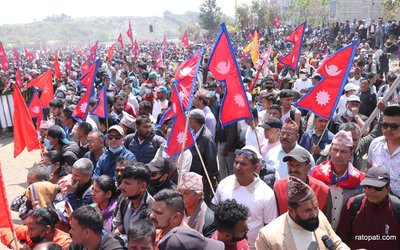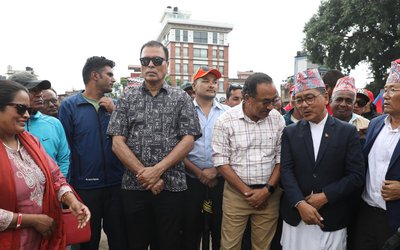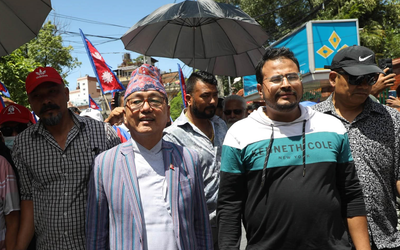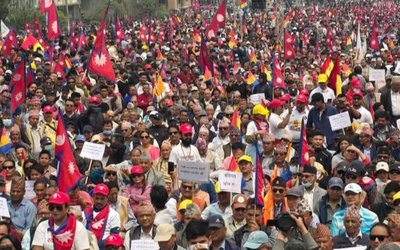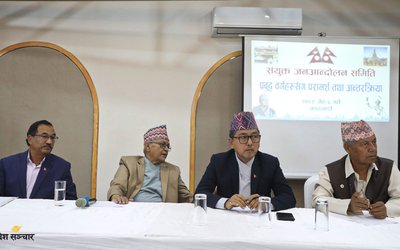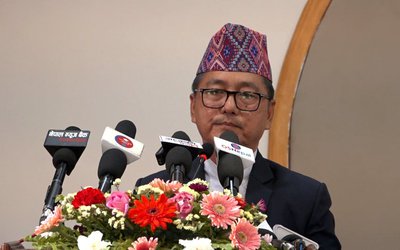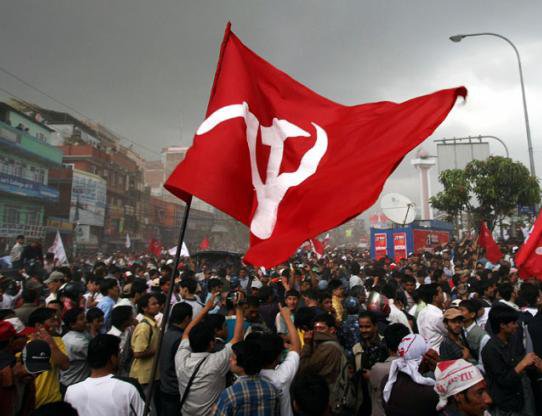
After making an impressive victory, the communist alliance of the Nepal Communist Party – the Unified Marxist-Leninist (UML) and the Maoist Centre (MC) - is waiting in wings to form its new government in just a matter days for fulfilling the constitutional formalities.
As per a recent news item, both the communist parties, on the red side of the political spectrum, are also cobbling together a way for their unification. However, it is not easy for CPN-UML rank and file to accept the leadership of Maoist Center leaders in the new party.
Although they have not mustered enough seats for a two-thirds lead in the federal parliament, as they claimed they would during the campaign, they have a firm communist alliance that secured a comfortable majority at the centre and dominant presence in five of the seven provincial assemblies.
These elections elected 275 members to the House of Representatives (HoR) and 550 representatives to the assemblies of the seven newly-created provinces.
The CPN (UML) won 80 seats, the CPN (Maoist Centre) 36 seats, the Nepali Congress 23 seats, the Rastriya Janata Party Nepal 11 seats, the Federal Socialist Forum Nepal 10 seats and the Naya Shakti Party Nepal, the Nepal Workers and Peasants Party, the National People's Front and the Rastriya Prajatantra Party one seat each out of the total 165 seats under the first-past-the-post election system for the national parliament. An independent has won from one constituency.
The preliminary election results of the proportional representation system of the election to the House of Representatives showed that UML would get 41 seats, Nepali Congress 40 seats, the Maoist Centre 17 seats, the Rastriya Janata Party Nepal six seats and the Federal Socialist Forum Nepal six seats.
As per the election results under the first-past-the-post and the PR system, the UML will be the largest party in the House of Representatives with 121 seats, the Nepali Congress the second largest party with 63 seats, the Maoist Centre the third largest party with 53 seats, the Rastriya Janata Party Nepal fourth largest party with 17 seats and the Federal Socialist Forum Nepal the fifth largest party with 16 seats.
According to the constitution, 138 seats are needed for commanding a majority in the 275-member lower chamber of parliament.
At the provincial level, 330 posts have been filled through the FPTP system, and another 220 will be nominated on the PR basis.
Both these bodies will have 33% representation of women as mandated by the constitution. Any shortfall in women’s representation, as it is huge under FPTP declared results, will have to be made up by the political parties through the PR system.
Left Victory Agenda
Although alliance leaders, K.P. Sharma Oli of the UML and Pushpa Kamal Dahal of the Maoist Centre jointly campaigned with the slogan of merging the two communist parties, it is not easy for CPN-UML, which has a strong grass root level presence, with NGOs and community based structures.
The question before CPN-UML, which defended the last local election against NC and Maoist Center alliance, emerging the largest party, is whether to get diluted with the Maoist center dissolved in it or not.
All the three levels of elections as envisioned by the constitution have been successfully held. The victory of the Left Alliance has been greatly facilitated by a weak and directionless opposition put up by the Nepali Congress (NC) led by Sher Bahadur Deuba.
NC has ended up with only 23 elected seats under FPTP at the national level, though they are very close to the UML in PR votes. Madhesh parties also did not put up a strong electoral show. Except in Province 2, they lost in all other six provinces to the Left Alliance, both at the provincial as well as national level.
The main question before the new left government would be to address the Nepali aspirations by measuring up to the promises made in this respect during the election campaign by the top UML and Maoist leaders.
The very first pre-condition for the Left Alliance to perform on their promises is to maintain their unity, even if they fail to forge the promised merger of the two parties.
And this may not prove to be easy for the UML and the Maoists as they have serious ideological differences, and divergent political approaches regarding some of the key political and constitutional issues like constitutional amendments for accommodating the remaining Madhes demands, working of the Truth and Reconciliation Commission to complete the peace process, creation of new institutions like the ‘Executive/Effective Presidency’ and working out credible power-sharing arrangements to satisfy their respective cadres.
Despite all these, the possibility of Oli reaching out to either NC or Madhes-based parties to liberate himself from the Maoists is a rather remote proposition.
India and China Factor
Outside the domestic challenge, the Left Alliance also has to cope with its two neighbors – India and China. UML under Oli had opened Nepal’s option of cultivating China to diversify its heavy dependence on India in the matters of trade and transit.
A fresh dispute has erupted between the leftist alliance and the Nepali Congress over the modality of the election of members to the National Assembly, which has created another political deadlock. The parties have also dragged the Office of the President in this controversy.
The Nepali Congress-led government had, two months back, presented before the President an ordinance related to the election of the members to the National Assembly, the Upper House of the federal parliament. This ordinance has made provisions for adoption of the single transferable voting system for the election of the members to the National Assembly.
The leftist alliance is in favor of adopting the block system of voting for the election of the members to the National Assembly.
This dispute over the ordinance is likely to delay the formation of the new government. The federal parliament will not have the full shape unless the National Assembly is formed.
However, the formation of the new government under the communist alliance will begin next week. One of the key issues that will continue to stick out will be how the CPN-UML will retain its identity in the process of unification, promised by the top brasses of both the parties.

Keshab Poudel
Poudel is the editor of New Spotlight Magazine.
- FOURTH PROFESSOR Y.N. KHANAL LECTURE: Nepal-China Relations
- Jun 23, 2025
- Colonel JP CROSS: Centenary Birthday
- Jun 23, 2025
- REEEP-GREEN: Empowering Communities with MEP
- Jun 16, 2025
- BEEN: Retrofitted For Green
- May 28, 2025
- GGGI has been promoting green growth in Nepal for a decade: Dr. Malle Fofana
- May 21, 2025
